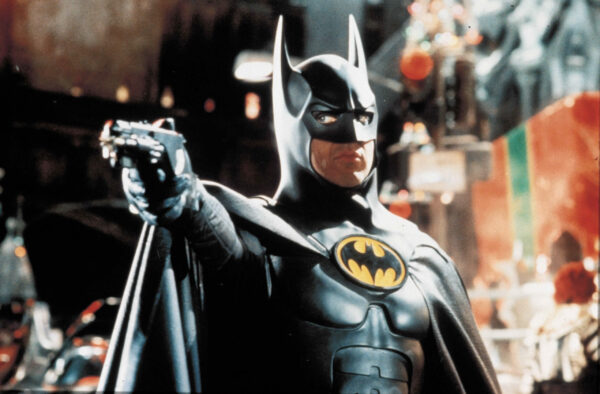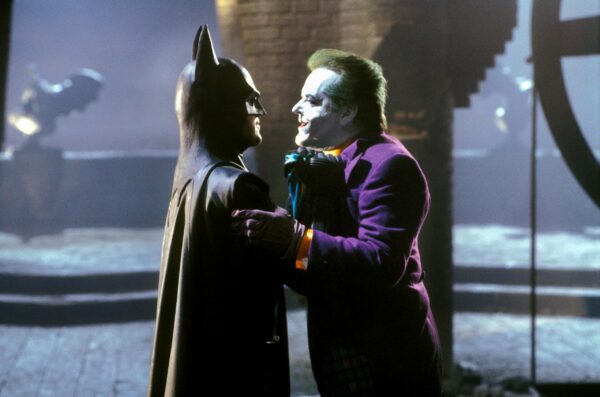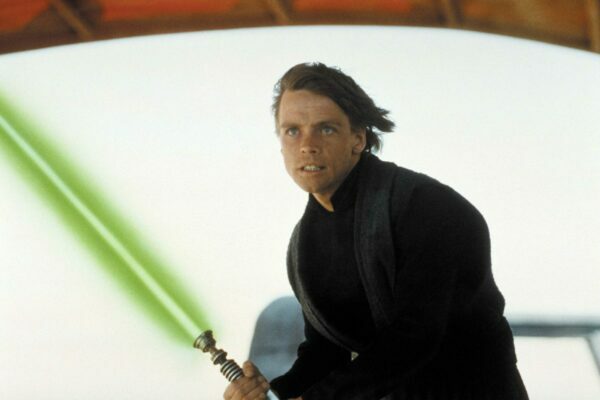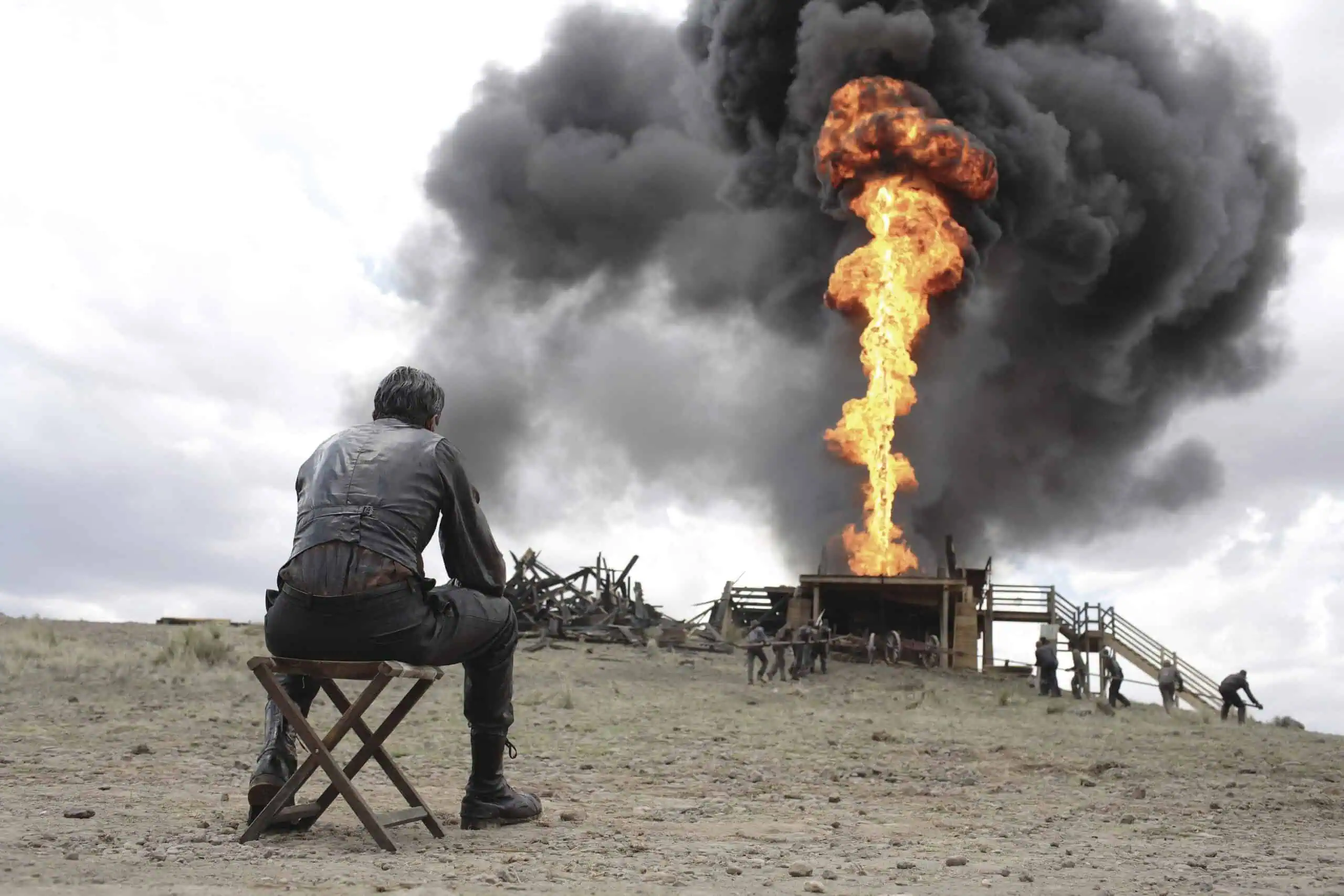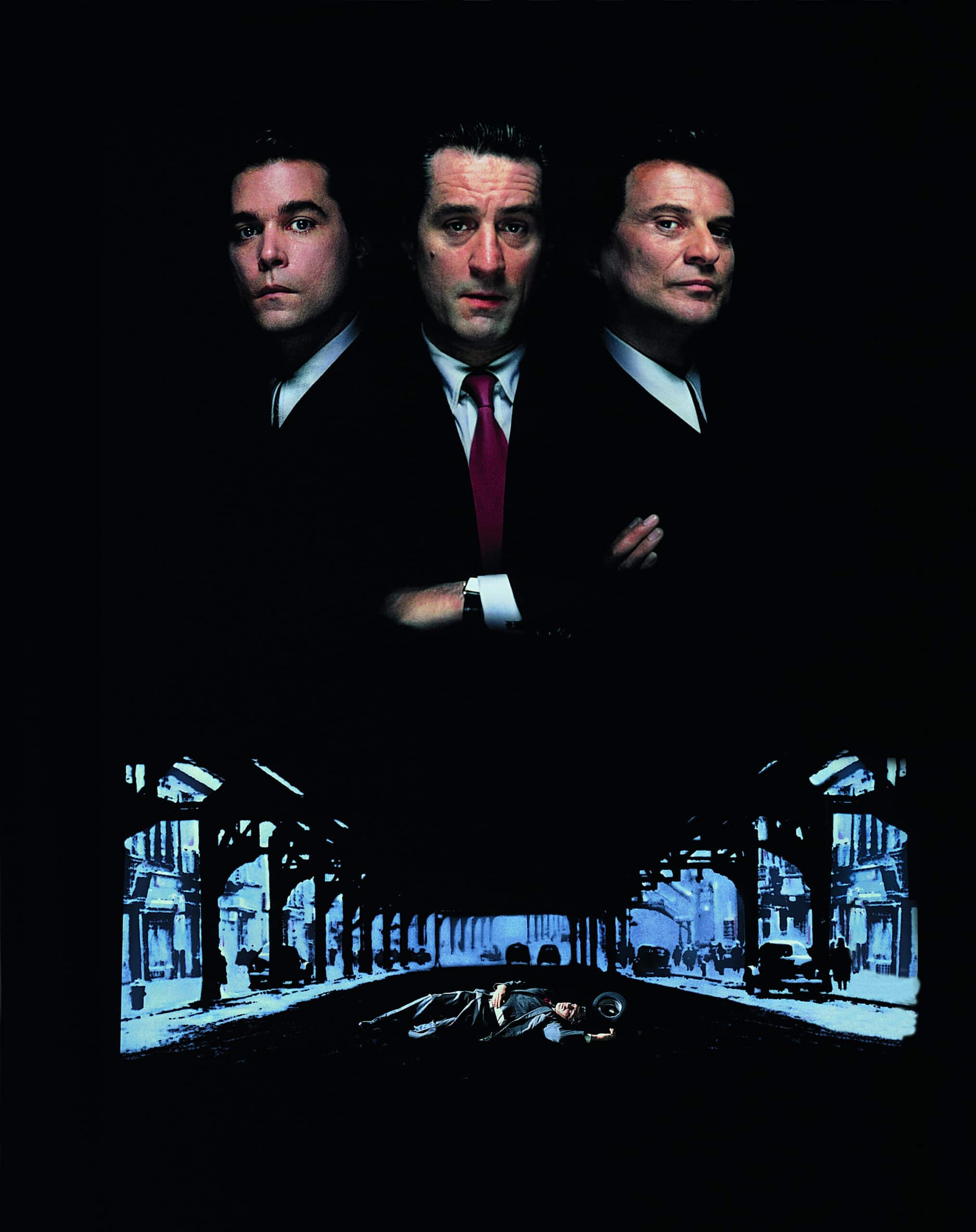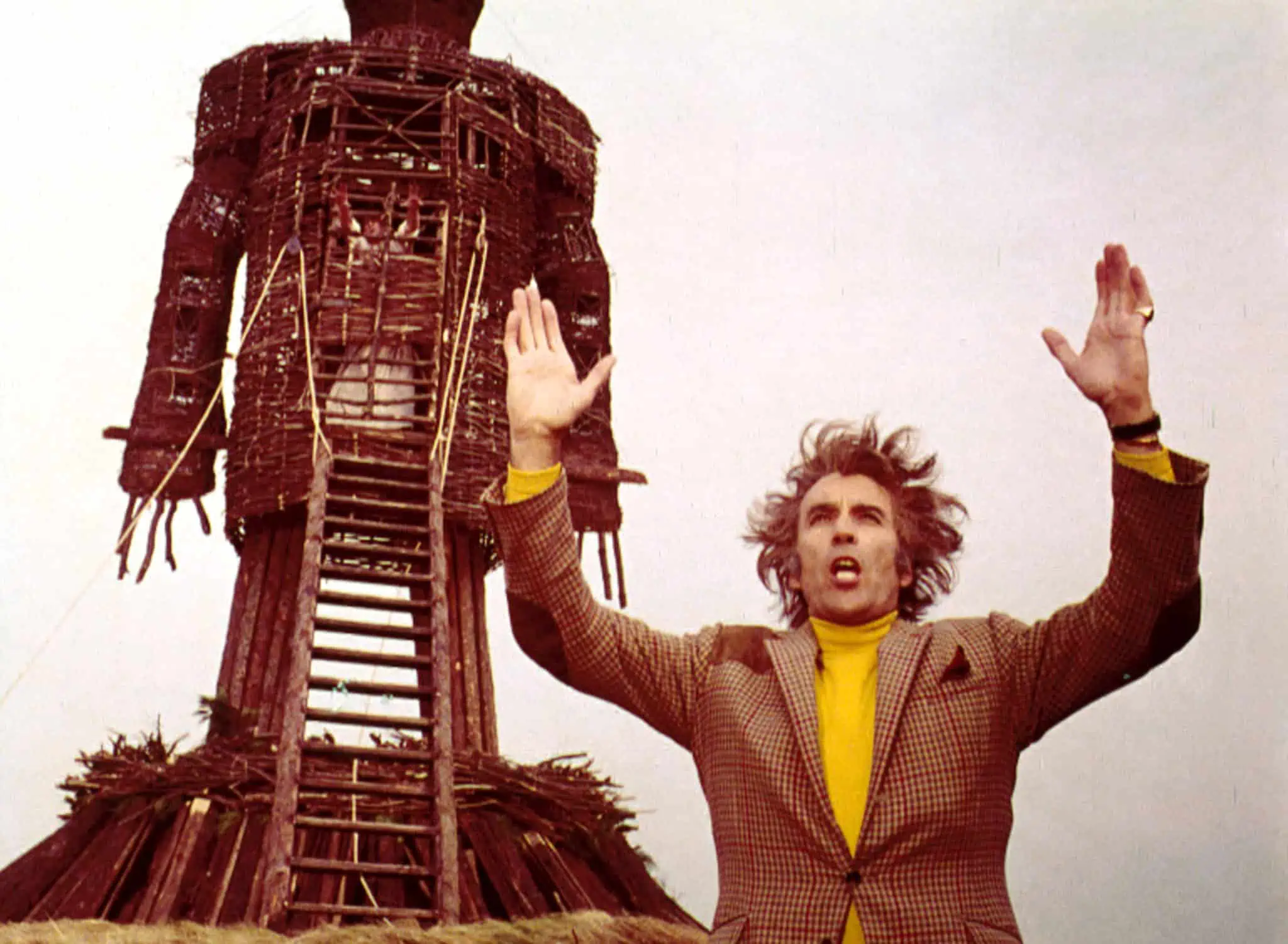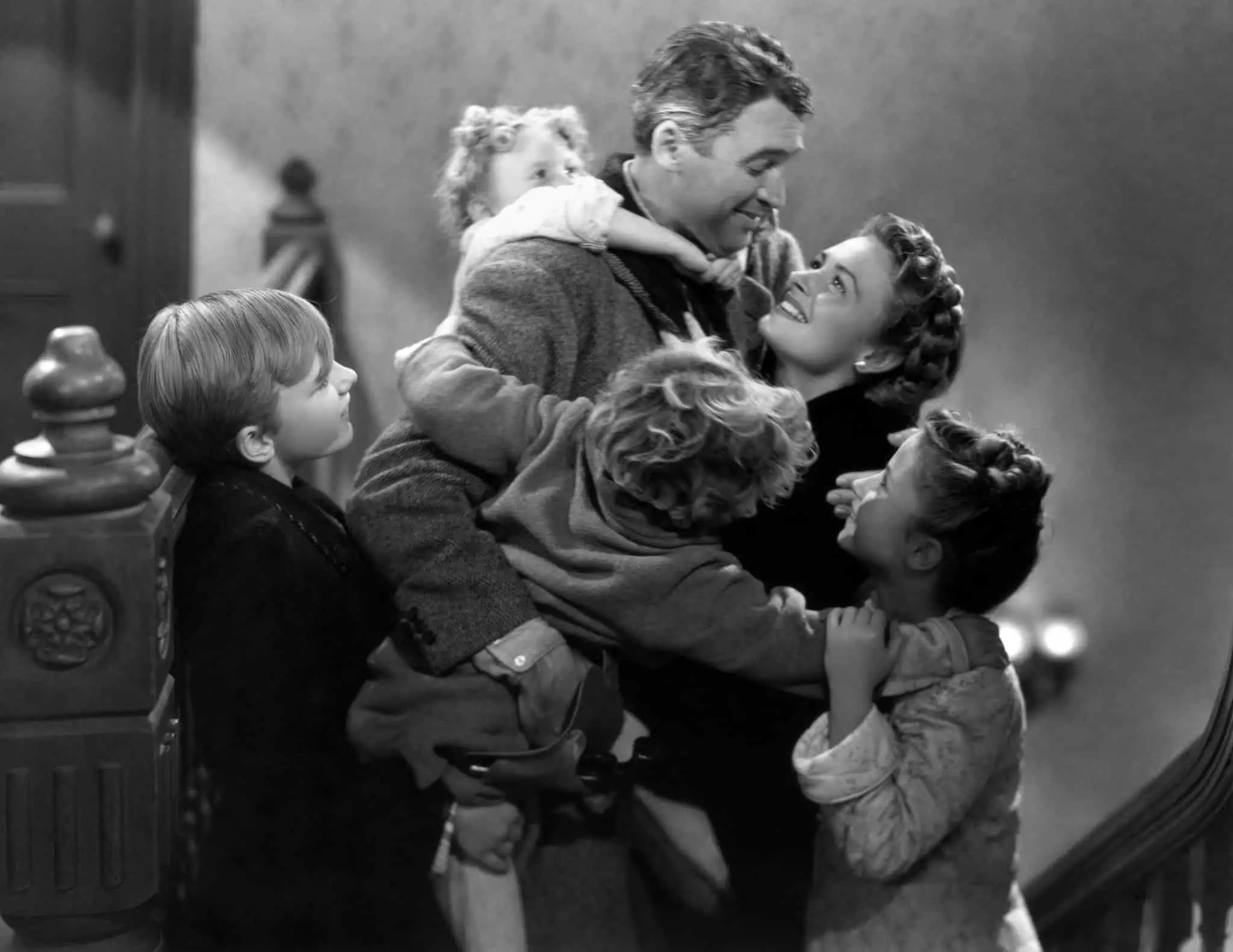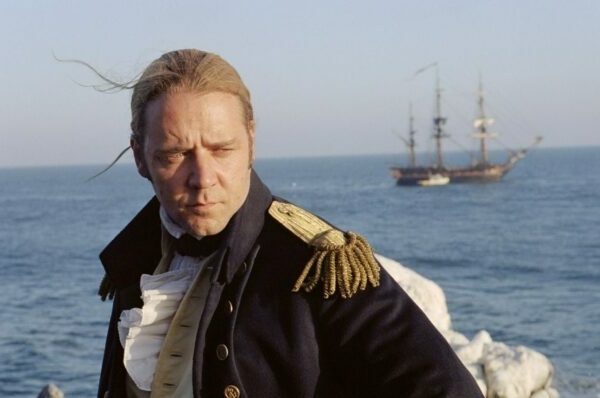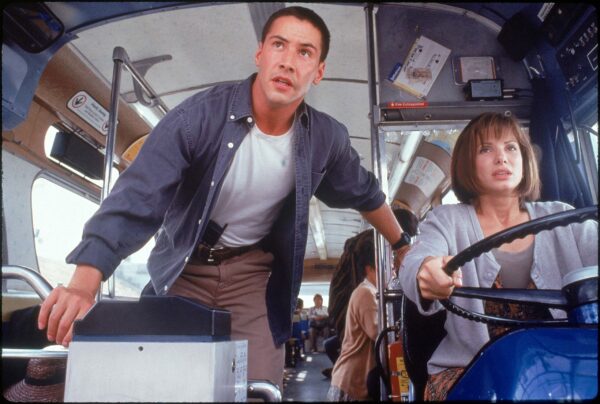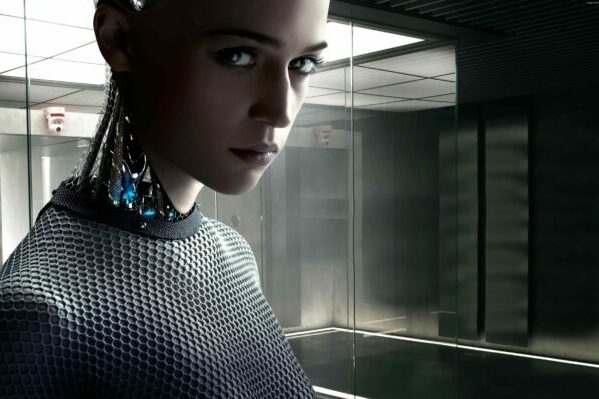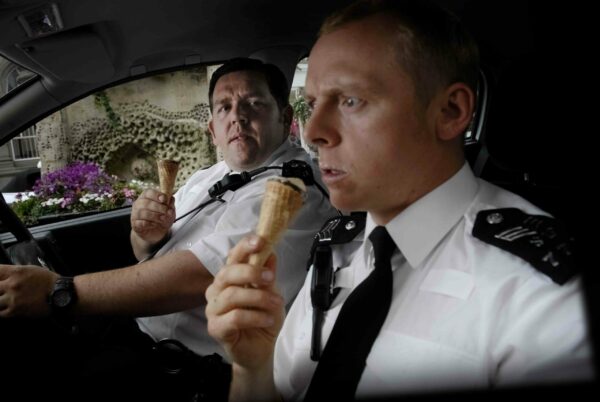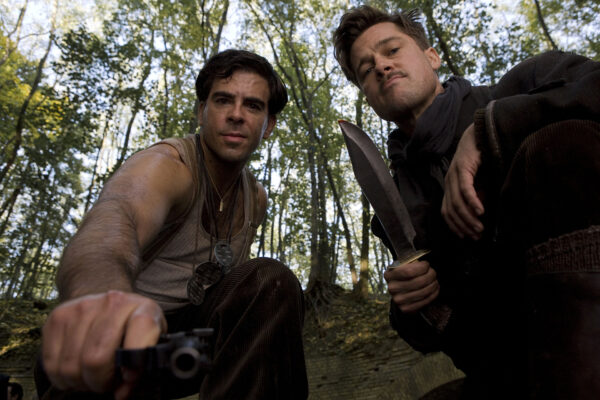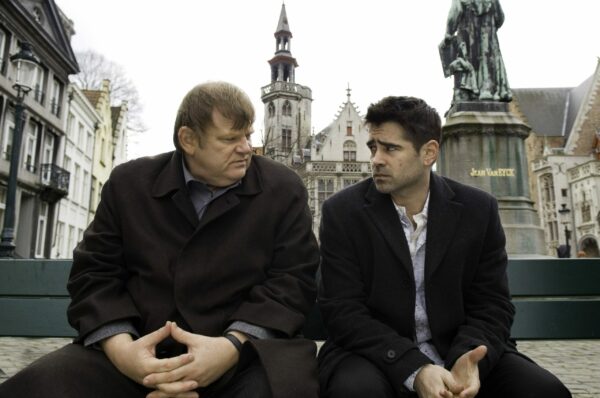
Quentin Tarantino’s foray into the War Movie genre was a bit of surrealism mixed with QT’s trademark intensity. Jonah Rice revisits the film to tell the story behind the scenes with 20 fascinating, fun facts.
Quentin Tarantino is one of the more renowned American directors of the past three decades. With Academy Award winners like Pulp Fiction and Django Unchained under his belt, Tarantino has managed to build a filmography that’s established him firmly as an auteur.
From Westerns to heist films, he’s worked in various genres throughout the years. He’s also known for his alternate renditions of historic events. He combined both his precedent for genre films and his tendency to shift prominent moments in history to create Inglourious Basterds, an espionage set during World War II.
Today, we’re counting down the 20 most interesting facts about Inglourious Basterds.
1. Tarantino Makes an Appearance
In beginning of the “Bear Jew” scene, you can spot Quentin Tarantino as a dead Nazi soldier whose corpse is being scalped. Known for making appearances in his own films, Tarantino had done so twice before Inglourious Basterds.
The first instance was in 1992 with Reservoir Dogs, where he played Mr. Brown. The second came in 1994, of course, with Pulp Fiction. We all remember Jimmy, though. Those are the two most prominent instances of his acting in his own movies, while this tidbit about Basterds is far less-known.

Quentin Tarantino and Diane Kruger
2. Eli Roth Directed a Segment of the Film
The climax of Basterds encompasses the Nazi officials gathered in a local Parisian movie theater. The film being played was called “Stolz der Nation,” which translates to, “Nation’s Pride”. Deemed a film within a film, Tarantino didn’t actually direct the miniature movie. This was tasked to Eli Roth, the actor who played Donny “The Bear Jew” Donowitz within the actual Basterds film.
And for what it’s worth: there wasn’t a better person for the job. As a credentialed director in his own right, Roth made his debut in 2003 with Cabin Fever. He then directed both Hostel (2005) and Hostel: Part II (2007). All three films were of the horror variety, but it was still far more experience than the rest of the cast had.
Nation’s Pride
3. Only 30% of the Film is Spoken in English
Highly irregular for a Hollywood film of this caliber, roughly thirty percent of the dialogue spoken in Inglourious Basterds is English. That’s it. A large portion of the film is spoken in French, though it’s mostly dominated by German. Of course, there’s a little Italian thrown in there, too. Who can forget that espionage scene?
It’s worth noting that only one character can be heard speaking all four of the languages: S.S. Colonel Hans Landa. The actor who played him (Christoph Waltz) was even credited by Tarantino with saving the film. But more on that next.

Christoph Waltz as Hans Landa
4. The Film Nearly Wasn’t Made
Until he found Christoph Waltz, Quentin Tarantino was unsure the film would be made. He feared the role of Hans Landa was “unplayable,” as he describes it, due to the number of languages (four: German, French, English and Italian) the character used in the script. He even gave the casting crew one more week to find a fitting applicant before he pulled the plug on production entirely. That’s when they found Waltz, and the movie was saved.
It also took Tarantino nearly a decade to pen the script. He started it in 1998 after writing and directing Jackie Brown (1997). Eventually, though, he put the script on hold and made Kill Bill (2003/2004) in the meantime. He needed to perfect the ending of Inglourious Basterds before going into production, and he finally did just that.
The Many Languages of Hans Landa
5. This was the First Tarantino Movie in Which an Actor Won an Oscar
For his role as S.S. Colonel Hans Landa, Christoph Waltz won the Academy Award for Best Supporting Actor. Thus, he became the first person to win an Oscar for acting in a Tarantino movie. The next person to do so was, again, Christoph Waltz—that time for his performance in Django Unchained (2012).
Only one other person has won an Academy Award for acting in a Tarantino movie. In 2019, Brad Pitt was presented with the Oscar for Best Supporting Actor for his role in Once Upon a Time in Hollywood (2019). Still, though—Waltz will always be the first.

Christoph Waltz and His Oscar
6. It Was Tarantino’s Highest-Grossing Film at the Time of Release
At the worldwide box office, Inglourious Basterds garnered $321.5 million in total. This made the film Tarantino’s highest-grossing at the time of release, surpassing Pulp Fiction’s (1994) $213.9 million.
Eventually surpassed by Django Unchained in 2012 and again in 2019 by Once Upon a Time in Hollywood. The former made $425.4 million at the box office, while the latter garnered $377.4 million. It will be interesting to see what numbers his next (and final) film rakes in.
Django Unchained Official Trailer
7. Brad Pitt Speaks German
Here in Inglourious Basterds, Brad Pitt plays the lead character of Lt. Aldo Raine. And while his character never does so in the film, Pitt himself actually speaks fairly fluent German.
To learn more about his ancestry, Pitt frequented Germany for a few years and in tandem studied the language. You would have never guessed this just based on his performance—consider the espionage scene where Aldo and his Basterds butcher their Italian accents and fail to properly sell themselves.

Brad Pitt as Aldo Raine
8. Multiple Characters Were Nearly Played by Different Actors
At one point during his audition, Michael Fassbender inquired about playing the character of Colonel Hans Landa. Denying him, Tarantino said Fassbender couldn’t sell his German accent in an authentic manner. Eventually, Fassbender ended up playing a character (Lieutenant Archie Hicox) who was prominent in the plot specifically for having an obscure German accent.
And speaking of Hicox: regular Tarantino collaborator Tim Roth was actually in talks with the director at one point during pre-production to play the Lieutenant. Another prominent Hollywood actor in Adam Sandler was approached to no avail, as well. Since Sandler was filming Funny People (2009) at the time, he had to decline the role of Sergeant Donny Donowitz.
In Tarantino’s original conception of the movie, he envisioned Aldo Raine played by Sylvester Stallone. Meanwhile, Donny Donowitz would be played by Bruce Willis, and Hugo Stiglitz by Arnold Schwarzenegger. Let’s be glad he went in a different direction.
Michael Fassbender Interview
9. Eli Roth Made Huge Commitments for the Film
For his role as Donny “The Bear Jew” Donowitz, Eli Roth gained thirty-five pounds of muscle. He also learned to cut hair to get more into character, as outside of wartime, Donowitz was a barber in America.
Furthermore, he was taught tactics of hair cutting by producer Pilar Savone’s father. His name was Umberto, and he owned a salon in Beverly Hills, California. That seemed to work out quite well.

Eli Roth as Donny Donowitz
10. Two Characters Have Wilhelm Screams
You can clearly hear this famous sound during the premiere of “Nation’s Pride,” the German propaganda film-within-a-film. A soldier falls from the tower, and he unleashes the scream of Wilhelm. The first instance of the scream is a bit harder to hear, however. You can pinpoint it roughly ninety minutes into the film.
As a stock sound effect used in various movies and TV series, the Wilhelm scream can be traced back to 1951 with the film Distant Guns. Perhaps its most famous use came by way of Star Wars (1977). Its inclusion here in Basterds provides an excellent example of lesser-known uses of the scream.
Inglourious Basterds—Wilhelm Scream
11. Two Regular Collaborators of Tarantino Made Cameos
If you don’t recognize the voices of Harvey Keitel and Samuel L. Jackson, you easily could have missed them in Basterds. Jackson provided his voice acting skills for the narration. That’s the more discernible role of the two. Keitel, however, lent his vocal chops as the American officer making negotiations with Raine and Landa over the wireless radio.
After appearing in Pulp Fiction (1994), Jackie Brown (1997) and Kill Bill Vol. 2 (2004), this was Jackson’s fourth collaboration with Tarantino. On the other hand, this was only Keitel’s third collaboration with the writer/director. Jackson would go on to work with him twice more, while Keitel hasn’t since.

Samuel L. Jackson and Quentin Tarantino
12. Quentin Tarantino’s Foot Fetish
After eluding the grasp of Colonel Hans Landa in the movie’s opening scene, Shoshanna is seen running barefoot. In one of his more criticized qualities as a filmmaker, Tarantino is known for his obsession with bare feet. They can be seen in Pulp Fiction (1994), Kill Bill Vol. 1 (2003), and Deathproof (2007).
But here with Inglourious Basterds, it doesn’t just happen once. Again during the final scene of the movie, inside the projection room where she met her untimely demise, Shoshanna can once again be seen without shoes. This director is nothing less than consistent.
Shosanna Eludes Hans Landa
13. The Final Shot Is a Trademark of Tarantino’s
Shot from Landa’s perspective, the final frame of Inglourious Basterds focuses on an upward angle. Pointed at Raine (Pitt) and Utivich (B.J. Novak) as the two Basterds stare downward at their artwork (a swastika carved into the forehead of Landa). This shot, often referred to as the “Victim’s Viewpoint,” can be seen throughout many Tarantino films.
However, you might most commonly recognize it from the inside of a trunk. In Reservoir Dogs (1992), you’ll see the shot of Mr. Blonde (Michael Madsen), Mr. White (Harvey Keitel) and Mr. Pink (Steve Buscemi) glaring down at their victim: a cop, lying inside of Mr. Blonde’s trunk. A similar camera angle can be seen from Jackie Brown (1997), with Chris Tucker as the victim and Samuel L. Jackson as the perpetrator.

The final shot of Inglourious Basterds
14. Christoph Waltz Didn’t Attack Diane Kruger – That Was Actually Tarantino
Near the film’s finale, when Colonel Hans Landa (Christoph Waltz) kills Bridget von Hammersmark (Diane Kruger) via strangulation, the hands around her neck are actually those of Quentin Tarantino. While it was Christoph’s character doing the deed, the director feared that he would do it either with too much strength, or too little.
So, he did it himself. He wanted to elicit the most genuine reaction from Kruger in the moment, and while he received much backlash for the decision, I’d say it worked out alright. As far as the film was concerned, at least.
The Death of Bridgett von Hammersmark
15. The Characters Never Actually Use the Word “Inglorious”
Throughout the film, the word “inglorious” is never actually said despite being in the title. “Bastards” is used ad nauseum, as you likely recall. But “inglorious” never shows up amid dialogue.
However, you can find the word etched into Lieutenant Raine’s gun. It’s easy to miss, but it’s there. And that isn’t the only fun fact that the word has to offer.

The poster for Inglourious Basterds
16. Everyone Left Messages for the Editor Within Footage
At the end of every cut in the film, the actors would either walk back into frame or look at the camera (if they never left the frame) and say hello to editor Sally Menke. They got creative with it, too. Several actors like Til Schweiger (who played Hugo Stiglitz) would greet the editor while still within character.
She had been working with Tarantino as his editor for a long while, well before filming Inglourious Basterds. In fact, she edited every film he directed to that point, and she’s been nominated twice for Best Film Editing at the Academy Awards for her work. The first time she garnered a nod was in 1994 for Pulp Fiction. The second time? 2009, for Inglourious Basterds.
Unfortunately, she passed away soon after the film’s release. Her death is speculated to have been caused by heat-related circumstances during a hike Menke went on with her dog. Her body was found in Griffith Park, inside Los Angeles, California.
The Cast Says Hello to Sally
17. The Original Cut Was Much Longer
Before having to cut roughly forty minutes of the film, Tarantino’s first draft of the script featured multiple scenes that were eventually axed from the final product. He did film the scenes, though. It’s speculated that he intends to use the footage in the future, perhaps in the form of a prequel, but in my opinion, that will never materialize.
One of the cut scenes was a rather gruesome one with Donny “The Bear Jew” Donowitz. Yes, more gruesome than the spectacle with his baseball bat.
Near the middle of the film when Bridgett von Hammersmark gets shot in the leg and placed on the table of a veterinarian, Donny forces the vet to help Bridgett. What were Donny’s tactics of persuasion, you may ask? Shooting two of the kenneled dogs sitting in the scene’s background. It’s no wonder why they cut this moment from the film, but you can actually see the two dead dogs lying still in their cages within the final cut. That wasn’t the only deleted scene, though.
18. Anne Frank Signed Donny’s Baseball Bat
In a backstory scene from the original script, Donny roamed the streets of Boston asking Jews from his neighborhood to sign the signature baseball bat that he uses in chapter two of the final cut. The most prominent character from this moment came by way of an elderly Jewish lady named Mrs. Himmelstein. She drank tea with Donny and eventually signed the bat.
The most popular name that appears on the bat, however, was real-life Jewish girl Anne Frank. The same Anne that documented her hiding for over a year from the Germans until her eventual death at Bergen-Belsen concentration camp in 1944. This easter egg, if you noticed it, offered a great deal of familiarity for most audiences.
The Bear Jew Scene
19. In Chapter 3, Nobody Dies and Nobody Speaks English
Titled “German Night in Paris,” chapter three is the only section of Inglourious Basterds where someone doesn’t die. Up to this point, the film had essentially revolved around the prospect of death. It’s a Tarantino film, after all, and a war entry to boot. So, no real surprise there.
However, and again, nobody dies in chapter three. Opposite end of the spectrum: nobody speaks English, either. Considering he’s an American filmmaker, the bulk of Tarantino’s films are spoken in the English language. There was some Japanese in Kill Bill Vol. 1 (2003) and Vol. 2 (2004), but that was really it up to this point in his filmography. For no one to speak a lick of English through an entire chapter is undoubtedly an anomaly throughout his career.

The Bastards Attempting Italian
20. It’s Been Deemed Historically Inaccurate
Many critics used strong words regarding the inaccuracies displayed by Tarantino herein. Granted, this is commonly deemed an alternate history project. A genre of speculative fiction, alternate history is generally defined as stories that encompass historical events in a different manner than they actually happened.
Other examples of alternate history include books like The Man in the High Castle (1962) and even video games like Wolfenstein: The New Order (2014). Oddly enough, both of those explore the prospect of the Nazis winning WWII. Seems to be a popular setting for alternate history, and one of the most ubiquitous examples lies here with Inglourious Basterds.
The Trailer for Inglourious Basterds
Did You Know These Facts?
Which one was the most interesting? Let us know in the comments, be sure to share the list on your social media platforms, and as always, thanks so much for reading our 20 facts about Inglourious Basterds. Please share on your social platforms, and subscribe to our YouTube channel for lots of great video content.
The beginning of a beautiful friendship
Stay up-to-date with all things All The Right Movies by signing up for our e-newsletter.


